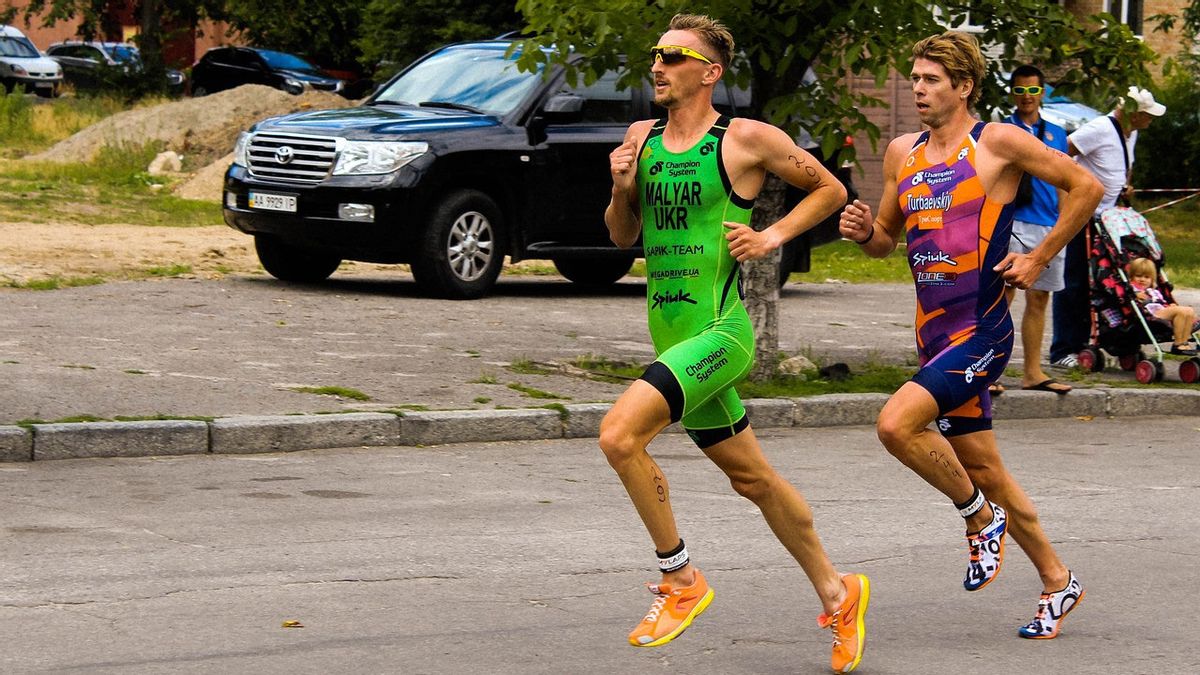YOGYAKARTA Running is a very popular cardio sport. This exercise can improve heart health, improve mood, and reduce the risk of joint inflammation. Despite having many benefits, running can also cause characteristic changes in the skin. This condition is referred to as the runner's face' or runner face. So, what is runner face?
The following article will discuss what runners face, causes and ways to avoid it.
According to the Health page, Richard Westreich, MD, a certified plastic surgeon in New York defines runners face as a change in skin characteristics on the face that runners may experience remotely and outdoors over time.
Some of the characteristics of runners face, namely rough, thick skin, sagging, wrinkles, and looking tired as well as concave eyes and thin appearance overall.
Meanwhile, according to Samuel J. Lin, MD, FACS, professor of surgery at Harvard Medical School and plastic surgeon in Boston, runners face is a term used to describe the appearance of facial skin changing color and having wrinkles that look rough, tired, or older than their true age.
Runner faces usually only happens to long-distance runners, so it would be fine if you ran every day or a few kilometers a few times a week.
Here are some things that can increase the risk of runners face in runners:
1. Body fat is too low
According to the study, long-range runners tend to have lower body fat than inactive people, especially for runners aged 35 years and over.
Subcutaneous fats provide volume and support to the skin, disguise fine lines and wrinkles and provide a more containing, refreshing, and younger look, said Elie Levine, MD, a certified plastic surgeon in New York.
"If you have low body fat, your skin will look aging," continued Elie.
2. Excess sun exposure
The runner's face can also occur if the skin is exposed to too much sunlight. The effects of sunlight on the skin are referred to as photoaging and have been proven to cause increased wrinkles, poor skin texture, and color change.
"Because runners tend to spend more time in the sun and potentially without protection against the sun, damage from UV radiation from the sun can raise signs of photoaging over time," explained Samuel J. Lin.
3. Radicals are free
The other causes of runners' faces are that the skin is often exposed to free radicals and other environmental lemens.
This condition can cause oxidative stress, as a result the skin looks more thin, loose, wrinkled and dull.
To avoid runners face, there are some tips you can do, including:
1. Make sure the body remains hydrated
The body needs sufficient water intake to keep it powered when running. Not only that, the hydrated body can also move you away from the runner face.
"Bad hydration can cause the skin to look drier and less fast," said Lin.
2. Maintain humidity after running
Using a moisturizer rich in nutrients and skin care products that contain antioxidants can help fight oxidative stress and maintain hydration and skin elasticity.
3. Wash your face with warm water after running
According to the American Academy of Dermatology Association (AAD), washing your face with warm water after running can take away sweat, dirt, and oil.
4. Wear protective clothing
To minimize the risk of runners face, runners are advised to run in the shade. If not possible, you can wear a hat, protective suit, and sunglasses to avoid direct sunlight.
5. Use sunscreen
How to avoid the last runner face is wearing sunscreen during running exercises. Use sunscreen with SPF 15 or higher on the face, body, and lips so that the skin is protected from harmful UV rays.
That's the information about what runners face is. Hopefully this article can add insight to the loyal readers of VOI.ID.
The English, Chinese, Japanese, Arabic, and French versions are automatically generated by the AI. So there may still be inaccuracies in translating, please always see Indonesian as our main language. (system supported by DigitalSiber.id)













